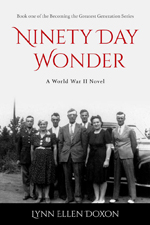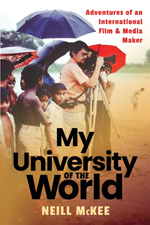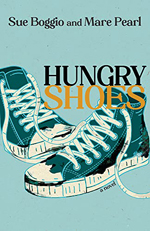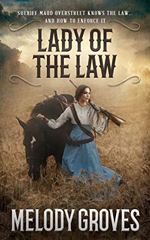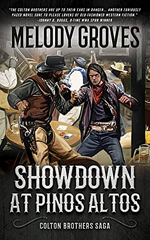Steve Bennett is a retired educator who also worked as a journalist for three New Mexico newspapers. In 1964, a shocking multi-murder occurred in San Diego, California in the seemingly idyllic suburb of Chula Vista where Steve was raised. Thirty years later, he began a decades-long journey to tell the story. His debut true crime release, His Own Flesh and Blood: The story of Raymond Goedecke, the killer in the choir (July 2023), is a “haunting exploration of deceit, manipulation, and the terrifying depths of human nature…a story that will leave readers questioning the very nature of evil and the masks that it wears.” Look for Steve on his SWW author page and on Amazon.
 Steve, please tell us a little about yourself.
Steve, please tell us a little about yourself.
I was born in San Diego, California and raised in the suburb of Chula Vista. These were my formative years—beginning with kindergarten and continuing to college. A good athlete, I accepted a football scholarship to New Mexico State University where I earned a degree in education. For the next 37 years, I served as a teacher, coach and school administrator. During that time, I was a New Mexico Teacher of the Year nominee as well as an Outstanding Alumnus in the NMSU College of Education. Additionally, I worked as a journalist for three New Mexico newspapers. Since 1968, New Mexico has been and continues to be my home.
What was the impetus for writing His Own Flesh and Blood?
During my high school years in the 1960s, I believed the growing city of Chula Vista had it all: great weather, excellent schools, civic pride, very little crime. But those beliefs were shattered in August 1964 when I read the newspaper headline, “Homicidal Maniac Strikes, Four Dead in Chula Vista.” The article read, “Four members of the Henry Goedecke family were bludgeoned to death last night in their Chula Vista home.” Shocked citizens first believed the killer must be a transient, or an escaped mental patient. But the murderer—using a hunting knife and pipe—was eighteen-year-old Raymond Goedecke, the oldest son.
For me, the horror of the crime was magnified because the Goedecke family attended the Lutheran Church which sat directly across the street from my church, the First Baptist Church of Chula Vista. The close proximity of my church and Raymond’s church—where I had many friends—made his crime personal. And in the years to come, images of Raymond Goedecke would intrude upon my thoughts like an uninvited guest. But the real reason Goedecke cemented himself in my memory had to do with my teaching career. From the moment I stepped into my first high school classroom, dealing with dysfunctional and violent students, Raymond Goedecke became a fixture in my mind. At such times, I had a single thought, “Why did he kill?” His Own Flesh and Blood is my answer to the question.
Can you step us through the process you used when obtaining research material for your book?
Researching my book was daunting, a job spanning ten years. When I started the process, finding time for research was difficult since I was teaching full-time. So, research was limited to weekends and summer breaks. I began at the Chula Vista and San Diego Public Libraries copying newspaper articles which recounted the murder, trial and sentencing. Later, this continued at the San Francisco Chronicle and the Placerville Mountain Democrat. I obtained police records from the Chula Vista, El Dorado County, Vacaville and San Rafael police departments. An invaluable source was the El Dorado County Courthouse and San Diego Superior Court. In San Diego, I copied the entire trial transcript (one thousand pages) which enabled me to speak to the legal issues and combine them with newspaper articles and interviews, blending them together to create a consistent narrative for readers to follow.
Were you able to conduct interviews with anyone who had been directly involved with solving this case? How about descendants of the victims?
The simple answer is “Yes,” but interviewing former friends close to the Goedecke family (those traumatized by Raymond’s crime) was a delicate business. I approached everyone with the utmost care and sensitivity. However, the police officers, bailiffs, judges and parole officers (once I established credibility) were another matter. In particular, former Chula Vista police officers were eager to speak to me. I believe the Chula Vista Police Department did a flawless job to develop an ironclad case against Goedecke. The California Supreme Court decision (that vacated Goedecke’s death sentence) appeared to agree, since they found no legal or procedural problems with Chula Vista’s police investigation. In short, these former police officers were proud of their work.
However, when I first began, my first interview was with an old church friend from 1964, Lee Bendickson. A lawyer, he handled the Goedecke estate and later testified at Raymond’s trial. Bendickson helped by contacting people on my interview list assuring them I could be trusted. Above all, I avoided surprising people I didn’t know by cold-calling them. I conducted scores of interviews with Chula Vista, San Rafael and El Dorado County officers who were directly involved in Goedecke’s case. The most significant of these was the two Chula Vista officers who obtained Raymond’s confession to the murders. But my most important contact was with San Diego Superior Court judge William Kennedy. In 1964, Kennedy had been the lead prosecutor at Goedecke’s trial. Kennedy was instrumental in obtaining the trial transcripts of the 1964 proceedings.
Henry Goedecke (the murdered father) was survived by his mother Elizabeth Goedecke and a sister and her family. At the advice of a close friend of theirs, he asked that I not pursue an interview with the family since the murders were extremely traumatic for all of them. I honored his request.
All told, either by direct contact or telephone, I conducted from forty to fifty interviews—all of them tape recorded.
Do you think the time you spent working in journalism helped you transition into the role of writing nonfiction?
Doubtless, the two years I spent working in journalism helped improve my writing a great deal. Working for the Alamogordo Daily News—which went to press seven days a week—writing with the pressure of a deadline, everything improved: writing speed, organization, and flow of article. Above all, the experience impressed upon me the importance of accuracy of language: using precise nouns and verbs and, above all, never misquoting a single living soul. However, though rewarding and mentally challenging, newspaper reporters are paid even less than teachers. This is why I left my job in Alamogordo, to take a teaching position at the Mescalero Apache Schools, thus returning to teaching.
Did you experience any obstacles while writing His Own Flesh and Blood?
When I began the book in 1994, the judicial cases against Raymond Goedecke had been adjudicated, or legally resolved. Since no appeals or other legal issues were pending, police departments and courts were able to legally release information. Otherwise, there would have been significant roadblocks hindering or halting outright any request for information. Regarding personal interviews, most individuals I approached were willing to share their stories with me. However, a few—for personal reasons—simply declined.
If you found yourself stalling during the writing process, how did you move past it?
Like any writer, there were frustrating moments that stopped me cold. At such times I’d reexamine the crime photographs for another look. These images were black and white pictures and color slides, pictures that were chilling, sickening…truly beyond belief. The violence Raymond inflicted upon his family was unspeakable. To describe it as just a murder would be an understatement, it was a massacre. Raymond, a son and brother, slaughtered his family and reduced them to four, lifeless piles of bloody pulp. Every police officer who witnessed the crime scene told me they’d never seen this level of violence. Their beaten, bloody bodies scarcely looked human. But the photos taken at the San Diego County morgue were, for me, the worst. These showed the condition of the bodies after being washed and cleaned. With the blood removed, the damage inflicted on their bodies was shockingly evident: Ellen’s broken jaw, a deep wound on her chest from the pipe end; the gaping wound on Mark’s forehead that shattered his skull; their eyes closed as if sleeping, their lives and humanity ripped away. What made this more painful for me was the knowledge that Ellen and Mark were both awake when the attack began. Seeing this, no matter how often, summoned deep emotion, bringing tears to my eyes. However, this was quickly supplanted by another feeling…anger. “How could he do that to his own brother and sister, his own flesh and blood?” Soon, the awful bitterness would pass. Somehow the intense anger I felt for Raymond was rejuvenating. I went back to work.
How long did it take you from start to finish to complete your book?
The short answer is that I began researching and writing in 1994, but the book was not published until 2023. However, that’s not the whole story. When I began in 1994 (the year I joined SouthWest Writers), technology was less sophisticated. As a result, I approached the process the old-fashioned way by sending query letters to agents. Agents usually responded with, “Dear Mr. Bennett, your book, His Own Flesh and Blood sounds like a great story, however….” My file drawer is full of those. Eventually, I simply gave up. But recently, a few friends who’d read my manuscript showed a lot of enthusiasm. I began to look into publishing independently (Amazon, BookBaby, etc.). To my surprise, I discovered that Amazon publishes more books worldwide than anyone. But they hadn’t started their publishing arm until 1995, the year they published and sold their first book.
What other genres do you enjoy reading other than true crime?
My reading interests are quite broad, largely due to diversity of subjects I taught during my teaching career. Any subject related to history: American Civil War, First and Second world wars, ancient history and New Mexico history. Reading about native American culture; Navajo, Apache, etc., are subjects I find fascinating. This also includes biographies of great national and international leaders.
Who are a few of your favorite authors?
My favorite author list is a long one, but these are a few who stand out: Herman Wouk, J.R.R. Tolkien, Gore Vidal, Laura Hillenbrand, Drew Gilpin Faust, Ann Rule, Ron Chernow and, of course, William Shakespeare.
What’s on your horizon regarding writing projects? Do you intend to stick with true crime?
There are many true crime stories pertaining to New Mexico that interest me, however, I’m undecided. Since I have Attention Deficit Disorder, that is a subject I’d like to put on paper at some point.
Is there anything else you’d like readers to know?
Only that—after a break from writing for many years—I’m happy to be more active with SouthWest Writers, a fine organization.
 Su Lierz writes dark fiction, short story fiction, and personal essays. Her short story “Twelve Days in April,” written under the pen name Laney Payne, appeared in the 2018 SouthWest Writers Sage Anthology. Su was a finalist in the 2017 and 2018 Albuquerque Museum Authors Festival Writing Contest. She lives in Corrales, New Mexico, with her husband Dennis.
Su Lierz writes dark fiction, short story fiction, and personal essays. Her short story “Twelve Days in April,” written under the pen name Laney Payne, appeared in the 2018 SouthWest Writers Sage Anthology. Su was a finalist in the 2017 and 2018 Albuquerque Museum Authors Festival Writing Contest. She lives in Corrales, New Mexico, with her husband Dennis.
 Butch, please tell us a little about your novel Bikini Beach.
Butch, please tell us a little about your novel Bikini Beach. Su Lierz writes dark fiction, short story fiction, and personal essays. Her short story “Twelve Days in April,” written under the pen name Laney Payne, appeared in the 2018 SouthWest Writers Sage Anthology. Su was a finalist in the 2017 and 2018 Albuquerque Museum Authors Festival Writing Contest. She lives in Corrales, New Mexico, with her husband Dennis.
Su Lierz writes dark fiction, short story fiction, and personal essays. Her short story “Twelve Days in April,” written under the pen name Laney Payne, appeared in the 2018 SouthWest Writers Sage Anthology. Su was a finalist in the 2017 and 2018 Albuquerque Museum Authors Festival Writing Contest. She lives in Corrales, New Mexico, with her husband Dennis.

